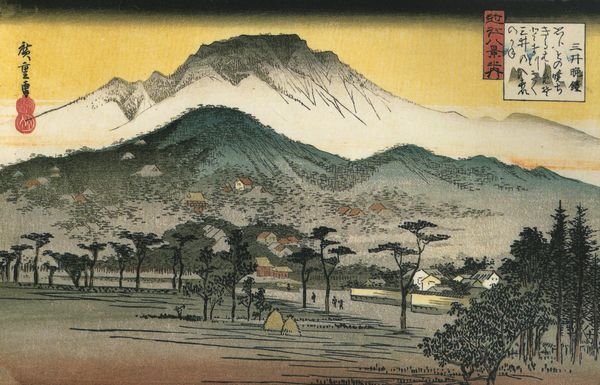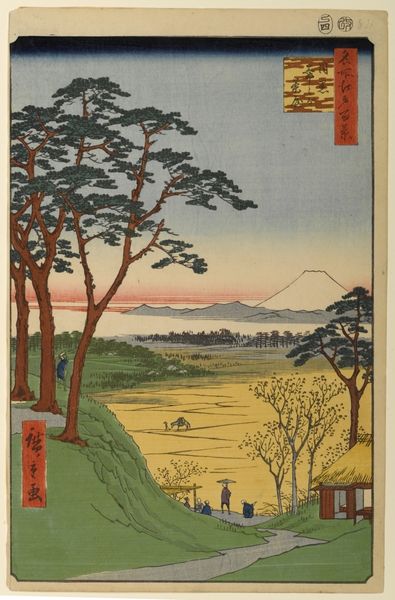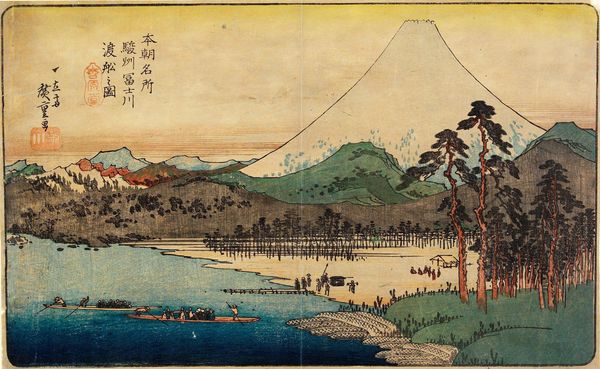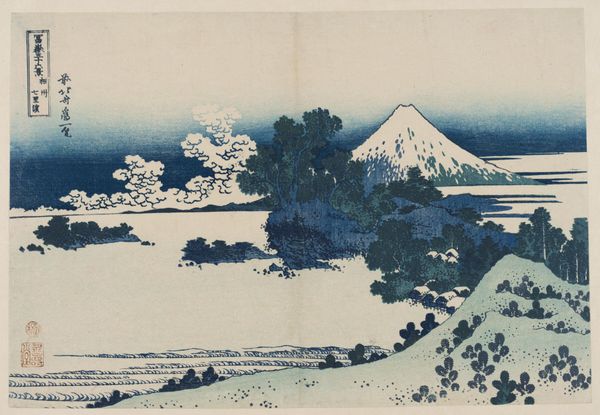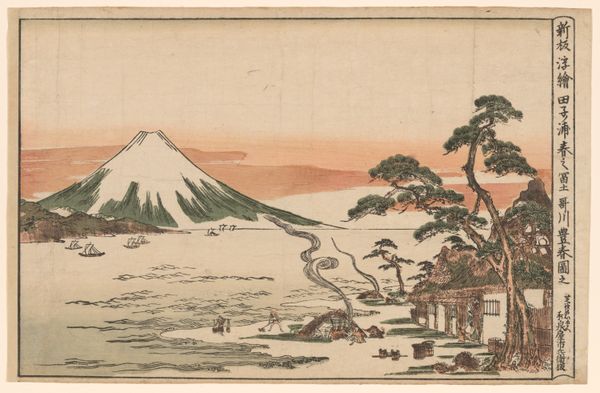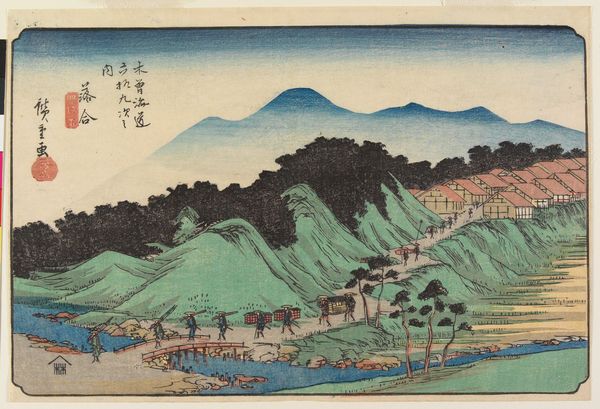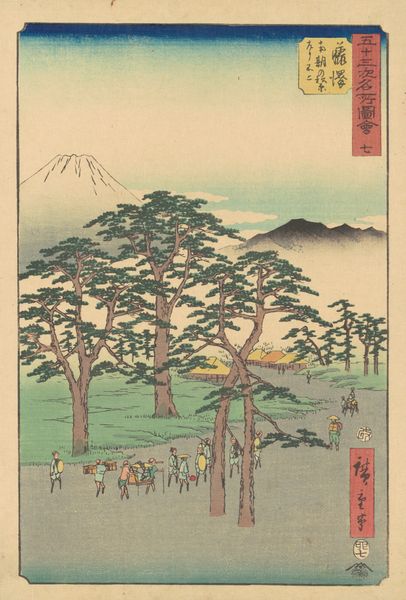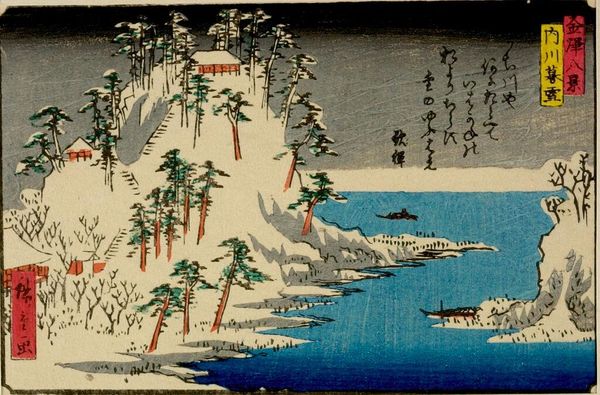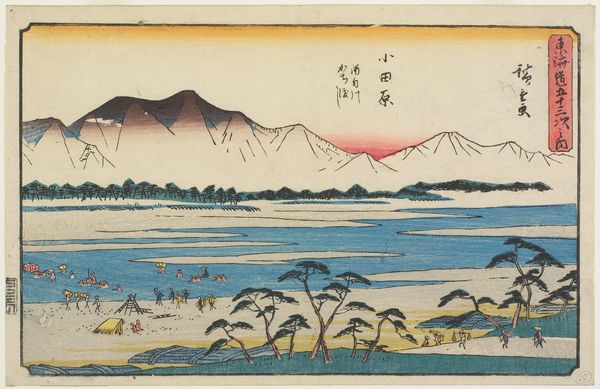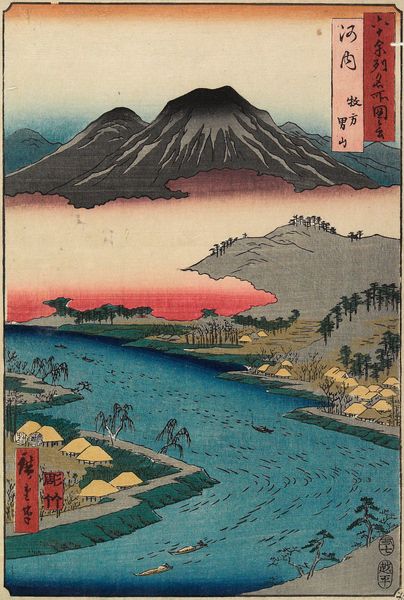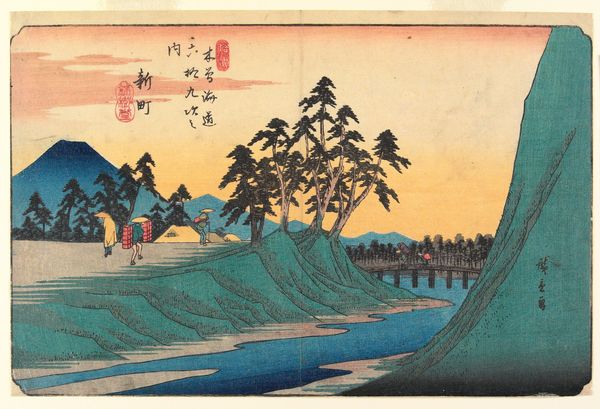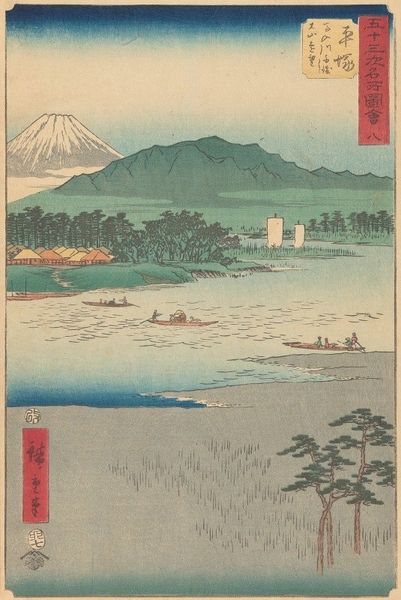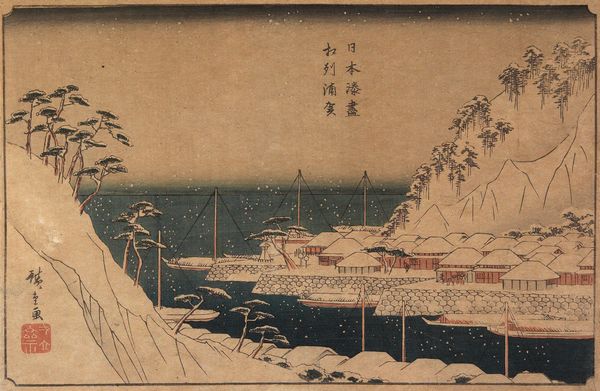
Dimensions: 8 3/4 × 13 11/16 in. (22.2 × 34.8 cm) (image, horizontal ōban)
Copyright: Public Domain
Curator: Let's turn our attention to "Evening Bell at Mii-dera Temple," a print attributed to Utagawa Hiroshige, likely created sometime between 1900 and 1970. It's a piece residing here at the Minneapolis Institute of Art. Editor: A subdued palette. The tonality creates a very calm, meditative mood. I’m drawn to the carefully constructed foreground and how it directs my gaze into the misty distance. Curator: Precisely. The composition, with its layered landscape, utilizes line and color to create depth and recession. The foreground, dominated by the dark foliage, provides a strong contrast to the lighter, almost ethereal mountain range in the background. Editor: Bells traditionally serve as auditory signifiers of transitions and epiphanies. Temples are common visual metaphors, often suggesting the idea of seeking enlightenment. Perhaps this piece alludes to themes of spiritual awakenings or simply contemplative solitude amidst the landscape? Curator: That's a valid interpretation. Given the title, we can surmise the bell's sound is not merely an acoustic event, but carries symbolic weight. Bells in Buddhist contexts can represent the voice of dharma, the teachings that awaken one to truth. Editor: I see now. Even without explicitly depicting the bell, the artist captures a cultural imprint through implication. It is not about accurate depiction but what this scene meant to contemporary audiences and, potentially, what the lingering significance continues to be. Curator: The execution further elevates the conceptual dimension, from the delicate rendering of the foliage, created via line and color variations to capture density, to the hazy mountaintops that seem almost to dissolve into the sky. Notice how that lack of clear boundaries and borders adds an essential dynamic. Editor: Thank you. It strikes me that in addition to technique, understanding of art relies greatly on individual experiences—it truly is something deeply intimate. Curator: Indeed. When focusing on elements like technique, it is interesting how that reinforces how subjective the experience of viewing a work can be.
